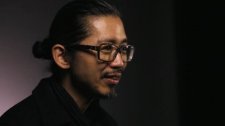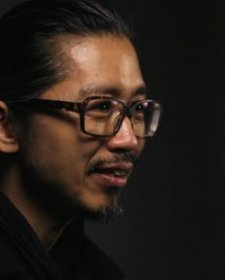- About us
- Support the Gallery
- Venue hire
- Publications
- Research library
- Organisation chart
- Employment
- Contact us
- Make a booking
- Onsite programs
- Online programs
- School visit information
- Learning resources
- Little Darlings
- Professional learning
Akira Isogawa (b. 1964), fashion designer, was born in Kyoto, Japan, and first came to Australia on a working holiday at the age of 21. After studying fashion design at East Sydney TAFE, in 1993 he opened the Akira Isogawa boutique in Woollahra, and swiftly established a reputation for his bold and intelligent clothes. At Sydney's Australian Fashion Week in 1996, he sent all his models out wearing red socks because he couldn't afford shoes for them; but he has shown at most Australian Fashion Weeks since, and since 1998 he has shown twice annually in Paris. The National Gallery of Victoria's Akira Isogawa: Printemps Eté in 2004–2005 was the first solo exhibition of an Australian designer's work to be shown at a major art institution and later toured to Singapore, Manila, Bangkok, New Delhi and Mumbai. A regular collaborator with choreographer Graeme Murphy, he designed costumes for The Australian Ballet's Romeo and Juliet and Murphy, and for four Sydney Dance Company productions. Sydney's Museum of Applied Arts and Sciences showed the retrospective Akira Isogawa in 2018–2019 and his work was included in the Victoria and Albert Museum's 2020 exhibition Kimono: Kyoto to Catwalk in London.
Peter Brew-Bevan photographed Isogawa half-hidden among the cardboard templates used to create the patterns for his exquisitely detailed garments, with one of his own labels adhering to his hand.
Gift of the artist 2005
© Peter Brew-Bevan
Peter Brew-Bevan (10 portraits)



On one level The Companion talks about the most famous and frontline Australians, but on another it tells us about ourselves.



Iconic Australian fashion designer, Akira Isogawa discusses the development of his unique style.



1 October 2014
This month I turn fifty, soI am just now looking rather more closely than usual at Fiona Foley, Steven Heathcote, Brenda Croft, Russell Crowe, Jeff Fenech, Akira Isogawa, Lee Kernaghan, My Le Thi, Shona Wilson and Mark Taylor AO, mindful that they too were 1964 arrivals.